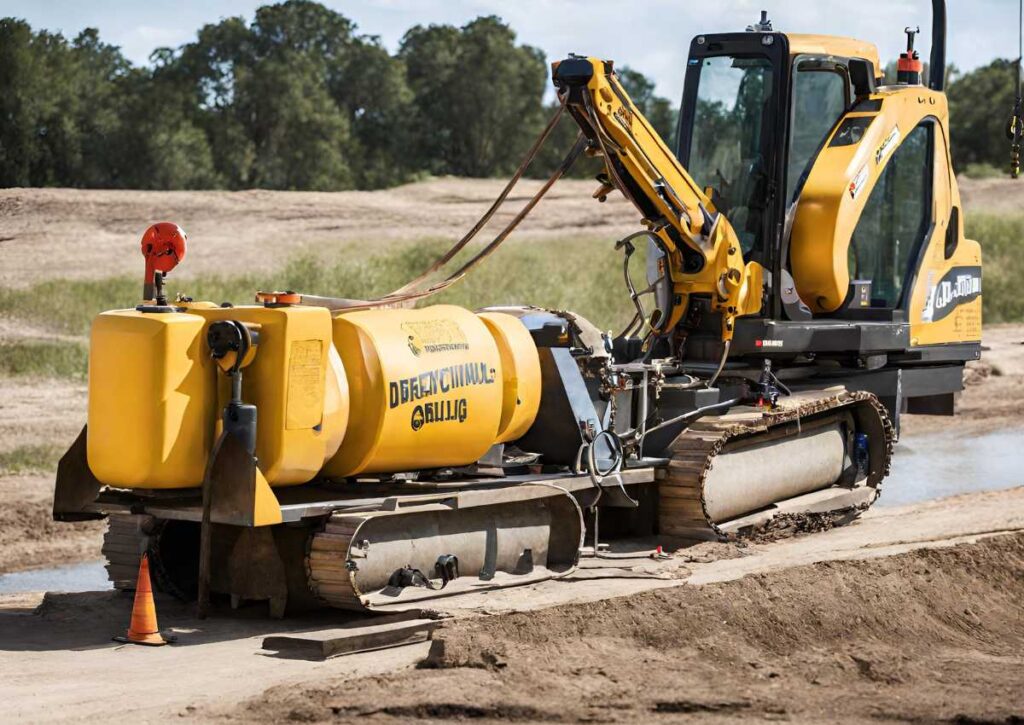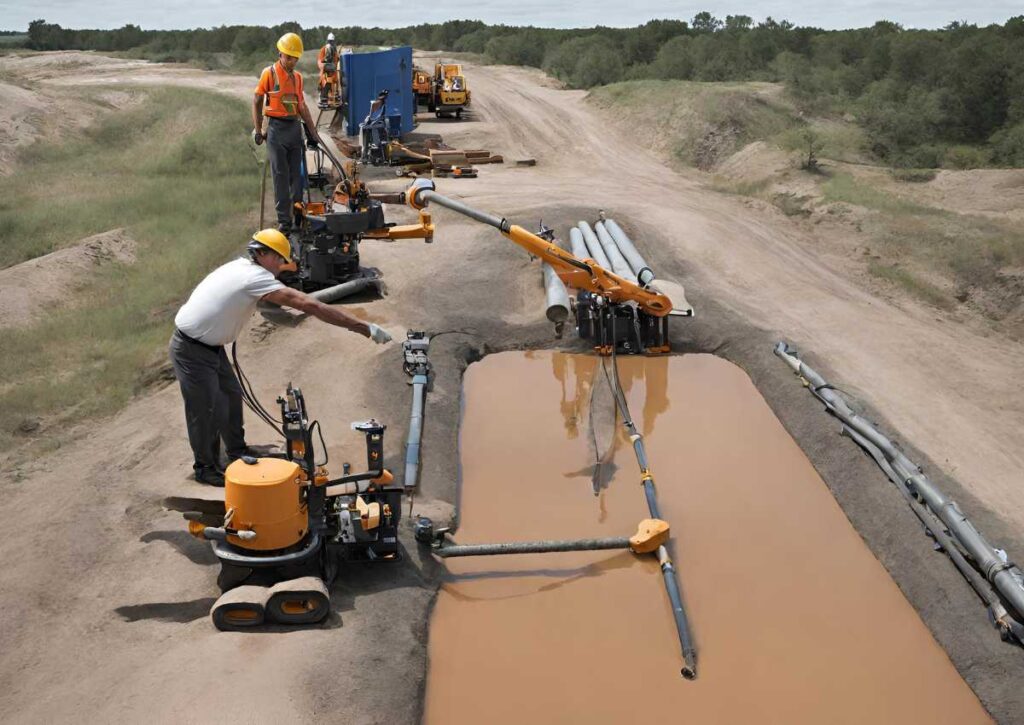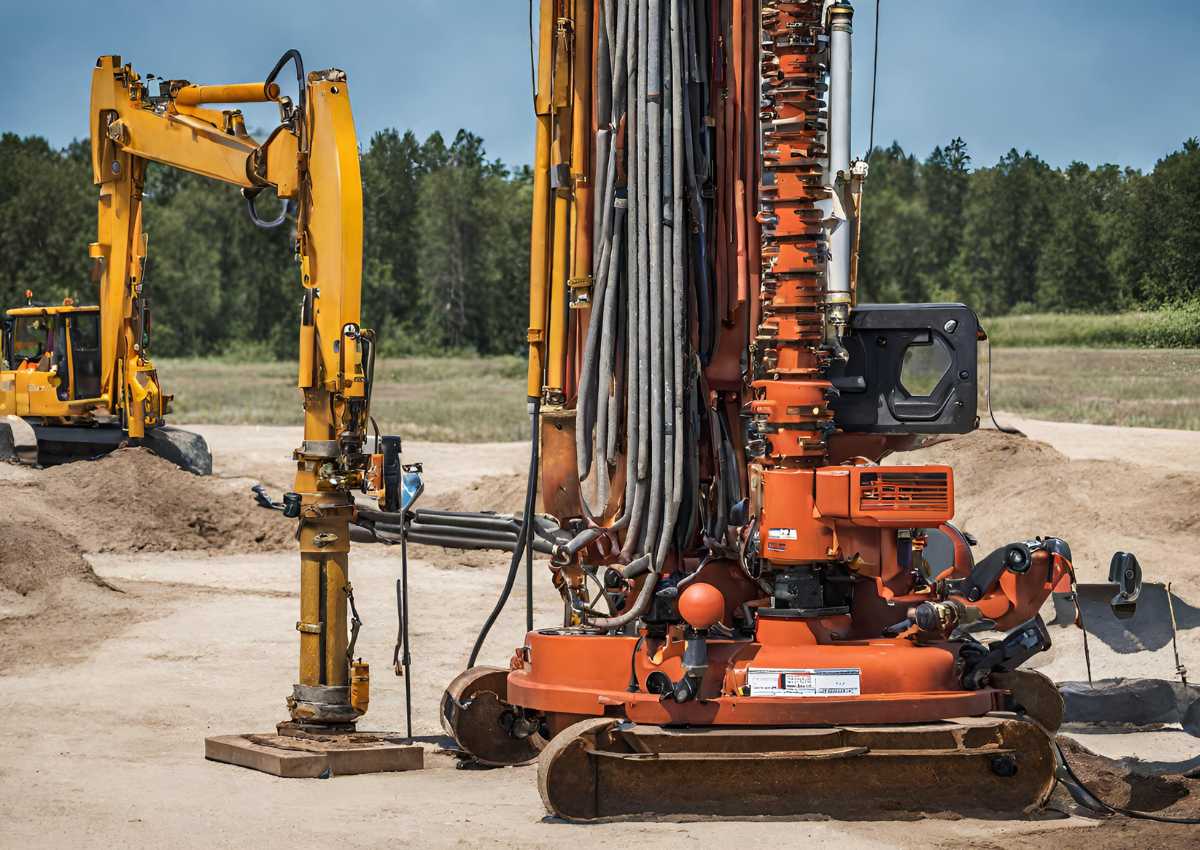Directional drilling is a specialized drilling technique that allows for the precise control and manipulation of the wellbore’s path.
This innovative method has revolutionized the oil and gas industry, making it possible to access reserves that were once considered unreachable.
As with any advanced technology, the cost of directional drilling is a significant consideration for companies and investors.
The cost of directional drilling can vary widely depending on several factors, and it’s best to get specific quotes from drilling companies based on your project’s requirements.
In this blog, we will delve into the factors that impact directional drilling costs and examine the elements that play a role in determining the ultimate price.
Understanding Directional Drilling
Directional drilling, or extended reach drilling or horizontal drilling, is a specialized drilling technique used in the oil and gas industry to access oil and gas reservoirs that are not directly accessible from the surface or located at significant depths beneath the earth’s surface.
This method allows engineers to steer the wellbore along a non-vertical path, which can be horizontal, deviated, or inclined, to reach the targeted reservoirs more effectively.
The process of directional drilling involves several vital components.
Directional Drilling Tools
Specialized tools and bottom-hole assemblies are used to control the direction of the wellbore.
These tools include measurement-while-drilling (MWD) systems, logging-while-drilling (LWD) tools, and rotary steerable systems (RSS).
MWD and LWD systems provide real-time data about the drilling process, while RSS allows for more precise wellbore steering.
Planning And Surveying
Before drilling begins, a comprehensive well plan is developed based on geological data, reservoir characteristics, and desired drilling objectives.
A survey of the drilling site is conducted to establish the initial well position and to monitor the well’s trajectory during drilling.
Steering The Well
As drilling progresses, data from the MWD and LWD tools is continuously transmitted to the surface, providing information about the well’s inclination and azimuth (direction).
This data is used by drilling engineers to adjust the drilling direction, ensuring that the well stays on the desired path and reaches the target reservoir.
Geosteering
Geosteering is the practice of using real-time geological data to adjust a well’s trajectory.
By analyzing the formation properties encountered during drilling, geologists and drilling engineers can optimize the well’s path to stay within the most productive zones of the reservoir.
Advantages of Directional Drilling

Directional drilling offers several key advantages that have revolutionized the oil and gas industry. One of the primary benefits is the increased reservoir contact it provides.
Directional drilling allows a single well to access a larger reservoir area by steering the wellbore along a non-vertical path.
This significantly enhances production rates and improves the overall recovery of oil and gas resources.
Increased Reservoir Contact
Directional drilling allows a single well to access a larger reservoir area, increasing contact with the hydrocarbons and improving overall production rates.
Reduced Environmental Footprint
Directional drilling can minimize the need for surface drilling locations, reducing environmental impact and surface disturbances.
Accessing Remote or Challenging Reservoirs
Directional drilling is especially valuable for reaching oil and gas reserves located beneath sensitive areas or challenging terrains, such as urban environments, offshore locations, or regions with complex geological structures.
Cost Efficiency
Although directional drilling may have higher upfront costs due to specialized equipment and expertise, it can lead to higher returns on investment by maximizing reservoir production from a single well and reducing the need for multiple surface drilling locations.
Directional drilling has revolutionized the oil and gas industry by facilitating access to previously inaccessible reserves and significantly enhancing production capabilities.
The technology continues to advance, enabling the extraction of hydrocarbons in a more efficient and environmentally responsible manner.
Factors Affecting Directional Drilling Costs

Factors affecting directional drilling costs can be numerous and varied. Here are some of the critical factors that influence the overall expenses of a directional drilling project:
Well Depth And Length
The wellbore’s total depth and length significantly impact the directional drilling cost.
Deeper and longer wells require more time, drilling materials, and operational expenses, contributing to higher overall costs.
Geological Complexity
The geological characteristics of the drilling site play a crucial role in determining the difficulty and cost of directional drilling.
Drilling through hard rock formations, challenging formations like salt domes or faults, or encountering unexpected subsurface conditions can require specialized drilling techniques, equipment, and experienced crews, leading to increased expenses.
Equipment And Technology
Directional drilling relies on sophisticated equipment and technology, including downhole tools, measurement-while-drilling (MWD) systems, logging-while-drilling (LWD) tools, and rotary steerable systems (RSS).
The cost of these advanced technologies can vary based on the chosen provider, the project’s complexity, and the drilling operation’s specific requirements.
Labor And Expertise
Skilled professionals with expertise in directional drilling are essential for the success of any project.
The labour cost, including the compensation for experienced drillers, engineers, geologists, and support staff, constitutes a significant portion of the overall expenses.
Environmental Considerations
Additional measures and safeguards may be necessary to prevent ecological damage in environmentally sensitive areas.
Implementing environmental protection measures and complying with regulations can add to the overall cost of directional drilling projects.
Regulatory Compliance
Complying with local, regional, and national regulations and obtaining the necessary permits is critical in the drilling industry.
Costs associated with regulatory compliance, such as environmental impact assessments and permit application fees, can influence the total project cost.
Transportation And Logistics
The location of the drilling site can impact transportation and logistical costs. Remote or challenging-to-access areas may require more significant investment in moving equipment, materials, and personnel to the site.
Wellbore Trajectory
The complexity of the desired wellbore trajectory can affect the overall cost.
More intricate drilling paths may require additional equipment, engineering analysis, and careful monitoring during the drilling process.
Contingency Planning
Including contingency plans and budgeting for unexpected events or changes during the drilling process is essential.
Directional drilling costs can vary significantly based on these and other factors.
Project managers and drilling companies carefully assess these variables to provide accurate cost estimates and ensure the successful completion of directional drilling projects.
Breakdown of Directional Drilling Costs

The costs associated with directional drilling can be broken down into several key phases.
Planning and Design
Before drilling commences, extensive planning and design work is essential. This phase incurs surveys, geological analysis, feasibility studies, and engineering design costs.
Engineers and geologists collaborate to determine the best drilling path to maximize reservoir contact and optimize production.
Selecting appropriate drilling equipment and technologies is also critical in this phase.
Mobilization And Site Preparation
Once the drilling plan is in place, the equipment and personnel must be mobilized to the site.
Transporting heavy drilling rigs and associated machinery can be costly, especially if the site is remote or challenging.
Site preparation involves clearing the area, levelling the ground, and setting up the drilling rig and supporting infrastructure.
Drilling Operations
The actual drilling process accounts for a substantial portion of the total cost.
The expenses during this phase include labour costs for skilled drillers, engineers, and support staff who operate and monitor the drilling equipment.
Fuel for operating the rig, drilling fluids, and consumables like drill bits and drilling mud add to the costs.
In directional drilling, additional expenses may arise from using advanced technologies such as measurement-while-drilling (MWD) and rotary steerable systems (RSS).
Well Completion
After reaching the target reservoir, the wellbore must be completed to enable oil or gas production.
This phase involves several activities, including casing the well with steel pipes to stabilize the borehole, cementing the casing to prevent fluid migration between formations, and installing production equipment such as pumps or downhole sensors.
The materials and equipment required for well completion contribute to the overall expenses.
Monitoring And Maintenance
Directional wells require ongoing monitoring and maintenance to ensure efficient production and safety.
Regular inspections and occasional interventions, such as wellbore cleanout or stimulation, are performed to optimize well performance.
Monitoring expenses include using various technologies like downhole cameras and pressure gauges to assess the well’s condition and production rates.
Environmental Considerations
Directional drilling projects often entail environmental considerations, especially in ecologically sensitive areas.
Incorporating measures to safeguard the environment and adhere to regulations may contribute to the overall expenses.
This may include mitigating potential environmental impacts, restoring the site after completion, or using environmentally friendly drilling fluids.
Contingency Budget
Including a contingency budget is essential to account for unforeseen events or changes during the drilling process.
It’s important to note that the breakdown of directional drilling costs can vary depending on the specific project, its location, geological complexity, regulatory requirements, and the chosen drilling company.
Careful planning, efficient operations, and experienced project management are vital to controlling costs and ensuring the success of directional drilling projects.
Conclusion
Directional drilling has undoubtedly revolutionized the oil and gas industry, unlocking new possibilities for accessing valuable reserves that were once considered beyond reach.
The cost of directional drilling can be a significant consideration for drilling companies and investors.
Understanding the factors that influence directional drilling costs is crucial for accurate project budgeting and financial planning.
The depth and length of the wellbore, as well as the geological complexity of the drilling site, are primary factors that impact costs.
Deeper and longer wells and challenging geological formations can require specialized equipment and expertise, leading to higher expenses.
Thorough planning and design work are critical to optimizing the drilling path, selecting appropriate equipment, and mitigating potential challenges, but they also contribute to initial project costs.
FAQs
How is the cost of directional drilling calculated?
Directional drilling costs vary based on factors like distance, soil type, equipment needed, and project complexity.
What’s the average cost for directional drilling?
On average, directional drilling can range from $12 to $40 per foot, but it depends on specific project requirements.
Are there additional expenses besides drilling costs?
Yes, additional costs might include equipment rental, labor, site preparation, and any required permits.
Does depth affect directional drilling expenses?
Absolutely, deeper drilling involves more time and specialized equipment and can significantly impact overall costs.
Can project complexity influence directional drilling pricing?
Certainly, complex projects with multiple curves or challenging terrains often incur higher expenses due to increased labor and equipment demands.
Also Read
How Much Does It Cost To Drill A Well









